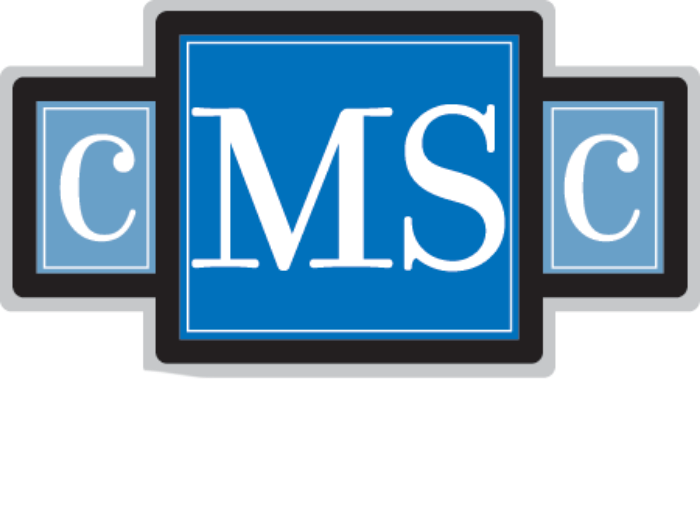Practice Points
- A greater understanding of the nature and volume of published literature evaluating factors affecting patient adherence and persistence across types of disease-modifying therapies (DMTs) in patients with multiple sclerosis is needed.
- Investigations of the factors associated with adherence and persistence to DMTs in multiple sclerosis tend to focus on self-injectable DMTs; there is a paucity of data for oral and infusion DMTs.
- Multiple factors were identified as potentially affecting adherence and/or persistence across the types of DMTs; although many factors (eg, age, socioeconomic status, previous DMTs) cannot be altered by patients or health care providers, the findings inform possible patient subgroups warranting attention and monitoring.
Adherence and persistence have often been used interchangeably in the management of disease-modifying therapies (DMT) in multiple sclerosis (MS). However, in recent years, there has been greater differentiation between the terms in published medical literature.1 Medication adherence is the degree or extent of conformity to the day-to-day treatment recommendations regarding the timing, dosage, and frequency of a medication.1 Medication persistence is the act of continuing treatment for the prescribed duration, from initiation to discontinuation.1 The degree of adherence and persistence is often situation specific (ie, treatment, individual, disease), resulting in a large degree of variability.
Similar to studies of patients with other chronic medical conditions,2,3 studies of adherence and persistence to DMTs in people with MS have found that a substantial percentage do not conform to recommendations about their prescribed therapies.4–14 Published adherence rates range from 27.0% to 93.8%,4–14 and published persistence rates range from 49.7% to 96.5%.4–6,8–10,12 The rates of adherence and persistence observed varied depending on the patient population, the type of DMT, the study duration, and the definitions of adherence and persistence.4–14 Adherence and persistence to MS DMTs are important to achieve the best clinical outcomes. Patients adherent to DMTs have been shown to have a reduced risk of relapse, emergency department visits, severe relapses, hospitalizations, and neuropsychological issues; lower costs; and increased quality of life compared with nonadherent patients.10,12,15,16 Persistence to DMTs has been associated with a lower likelihood of emergency department visits and inpatient admissions and with lower costs.17,18
An improved understanding of the factors associated with DMT adherence and persistence could enhance the overall planning of MS disease management and improve patient outcomes. These factors include those associated with the patient, treatment regimen, patient-provider relationship, clinical setting, and disease.19 The present study explores how the factors associated with adherence and persistence to DMTs in MS have been evaluated in the current literature. We determined that a scoping review20–22 was the most appropriate approach. To our knowledge, this is the first scoping review of the literature summarizing all studies evaluating adherence and persistence to DMTs in patients with MS, regardless of the definitions of outcomes used, the types of patients included, the study design, or the types of DMTs received.
Methods
A scoping review of the literature was performed given the heterogeneous nature of the body of literature and our desire to systematically synthesize the research evidence and group it in terms of its nature, features, and volume.22 The scoping review also enabled us to identify research gaps and make recommendations for future research.22 The Preferred Reporting Items for Systematic Reviews and Meta-Analyses Extension for Scoping Reviews (PRISMAScR) Checklist was used to conduct the literature review.23
We searched the PubMed database in March 2020 using the following search terms and strategy: multiple sclerosis AND (adherence OR compliance OR persistence) AND (factors affect OR predict OR associated with) AND limits to “human” and “English.” PubMed was used because of its ease of accessibility and comprehensiveness. There were no limits on publication date. Only studies that had primary data (ie, review articles and editorials were excluded), evaluated factors associated with adherence/persistence, and accounted for covariates and confounders were included. Two reviewers (author N.C.E and researcher Roger Edwards) screened the titles and abstracts of the articles from the literature search results to identify those that met the inclusion criteria. They also searched the reference lists of identified review articles to identify additional relevant studies.
Of 402 records identified through the PubMed database search, 341 were excluded due to a lack of primary data (n = 102) or because they did not measure factors associated with adherence or persistence (n = 239). The full text of the remaining articles was then assessed for eligibility, and a further 11 articles were excluded because they did not account for confounders or covariates. An additional 8 articles were identified from reference lists of previous literature reviews that met the inclusion criteria and were included. Overall, 58 studies were eligible for inclusion (Figure 1).
The information extracted and summarized from the screened articles included journal citation; publication date; country of analysis; study design; data source; duration of follow-up; years of data collection; study population (baseline demographic and clinical characteristics); sample size; DMTs evaluated; definition of adherence/persistence; factors associated with adherence/persistence that were evaluated; and factors positively, negatively, or not associated with DMT adherence/persistence.8,16,17,24–74
The factors associated with adherence/persistence were summarized as frequency of collection and directional findings. Studies were stratified by type of DMT evaluated (self-injectable, oral, infusion) and the definitions of adherence/persistence used (adherence, discontinuation, treatment initiation), creating 9 different groupings. Studies that included more than 1 type of DMT and did not present their findings by type of DMT were included in the scoping review; however, they were not included in the evaluation of the factors associated with adherence/persistence given the differences in assessing adherence/persistence across DMT types, and, hence, the stratification by type of DMT.
Results
Thirty-six studies evaluated adherence16,26-29,31-34,37-41,43–47,53-56,58,59,62,64-67,70,71,73–76 and 30 studies evaluated persistence8,17,24,25,29,30,35-39,42,44,48-52,56,57,59-61,63,64,68,69,72,77,78 (not mutually exclusive; total of 58 studies, 103,450 patients) (Table S1, available online at IJMSC.org). The studies were mostly conducted in the United States (n = 27)8,17,24,27,32-35,38-40,43,45,47,52,56–58,60,62,63,65–67,70,73,75,77 or Europe (n = 20),25,26,28,31,36,37,41,44,46,48–51,53,54,68,71,72,74,78 with the rest in Canada (n = 4),29,30,59,76 Australia (n = 2),42,64 or multinational (n = 4).16,55,61,69 The duration of follow-up ranged from a minimum of 1 month75 to a maximum of 14 years,30 and 11 studies had any or non-specified follow-up24,32,33,36,44,47,48,58,68,74,78 (Table S1).
The types of studies included were prospective and retrospective cohort studies (level IV), prospective patient surveys (level IV), analyses of randomized controlled trials (level II), and retrospective administrative claims database analyses (level IV) (Figure 2). Prospective and retrospective cohort studies and retrospective claims database evaluations were the most common types of studies conducted. Retrospective claims database analyses typically included large samples of patients. The year of publication for included studies ranged from 2001 to 2019. Clusters of studies were published in 2011, 2016, and 2017 (Figure 2).
Most studies examined self-injectable DMTs only (n = 41; interferon [IFN] β-1a intramuscular, IFN β-1a subcutaneous, IFN β-1b, glatiramer acetate)16,17,24–37,39–41,43–45,47,53–57,64–68,70–74,76–78; 2 examined oral DMTs only (dimethyl fumarate, fingolimod, terif lunomide),51,59 1 examined infusion DMTs (natalizumab) only,48 and 13 examined more than 1 type of DMT8,38,42,46,49,50,52,58,60–62,69,75 (Figure S1). Thirty studies evaluated adherence through patient self-reported outcomes (n = 15),16,28,37,40,44,58,63,65,67,68,70,73,75–77 medication possession ratio (n = 6),27,38,39,43,57,62 proportion of days covered (n = 5),29,45,47,56,59 or device reports (n = 4),31,40,53,71 and 36 studies evaluated persistence through discontinuation (n = 30),8,17,24,25,29,35,36,41,42,48,49,51,52,55–57,60,61,64–69,72,74–76 noninitiation (n = 5),35,36,63,73,77 or switching (n = 1)50 (Figure S1). The studies were not mutually exclusive, as some evaluated both discontinuation and adherence.
Self-injectable DMTs
The 41 studies involving only self-injectable DMTs evaluated adherence (n = 25),16,26,27, 28,29,31,34,37,39,40,43,44,47,53,54,55,64,65,66,67,70,71,73,74,76 discontinuation (n = 17),17,24, 25,26,30,35,36,37,39,41,44,56, 57,64,68,72,78 and treatment initiation (n = 3).35,36,77 The factors associated with self-injectable DMT adherence and/or persistence in at least 3 of the studies are presented in Table S2. There was substantial variability across studies in which factors showed positive, neutral, or negative associations with adherence. Increasing age was evaluated in 16 studies26,27,29,39,47,53,56,64–68,70,76–78 and was found to be positively associated with adherence in half of the studies.26,27,39,47,56,65,67,77 The effect of number or severity of relapses was evaluated in 7 studies31,40,57,64,72,77,78 and was found to be positively associated with adherence in half of the studies (Table S2). Higher educational level, higher body mass index (BMI), greater alcohol consumption, and DMT adverse events were negatively associated with adherence in half or more of the studies in which they were assessed (Table S2). Perceived benefits of the DMT had a positive association with persistence, while being in the South US Census region, lower educational level, greater number/severity of relapses, greater alcohol consumption, and more recent year of DMT initiation had a negative association with persistence in half or more of the studies in which they were assessed. Overall, associations between adherence and/or persistence and cognitive issues, anxiety, or depression were not apparent (Table S2).
Three studies evaluated factors associated with self-injectable DMT initiation.35,36,77 Two of them evaluated prescription abandonment, defined as the patient never taking possession of a prescribed medication. Gleason et al35 found that greater out-of-pocket expenses for DMTs were associated with a greater likelihood of prescription abandonment (odds ratio [OR], 6.1-7.3 for out-of-pocket expense groups greater than $200). Grytten et al36 found that the risk of not starting a DMT was associated with increasing age at diagnosis (OR, 1.04), geographic region (OR, 0.07-0.27), and disease-related stress and avoidant trauma coping (OR, 1.03). The third, Minden et al,77 evaluated the factors associated with ever use of self-injectable DMTs. Age (OR, 0.09-0.38), annual family income (OR, 0.38-0.69), perceived health status (OR, 1.69), seeing a neurologist for usual MS care (OR, 0.14-0.54), time since diagnosis (OR, 0.59-2.37), level of disability (OR, 2.79-3.68), disease course (OR, 0.55), and number of relapses (OR, 1.46-2.01) were associated with ever use of self-injectable DMTs.
Oral DMTs
Of the 2 studies that examined only oral DMTs,51,59 1 study evaluated the factors associated with DMT adherence,59 both evaluated the factors associated with DMT persistence, and neither evaluated DMT initiation. Setayeshgar et al59 found that patients with MS who had previously used another DMT had higher odds of optimal adherence to their oral DMT (OR, 2.4). In addition, patients with MS with higher neighborhood-level socioeconomic status had higher odds of discontinuation within 6 months (OR, 2.2).59 Lattanzi et al51 reported variation in discontinuation rates by oral DMT (OR, 2.89-3.26) and suggested that the reason for these observed differences in persistence may be a combination of drug efficacy and drug tolerability; however, this was not specifically evaluated in the study.
Infusion DMTs
Only 1 study examined the factors associated with infusion DMT persistence: Krämer et al48 found that discontinuing an infused DMT was associated with physicians’ judgment on treatment continuation, patients’ perception of personal progressive multifocal leukoencephalopathy risk, and John Cunningham virus seroconversion (R2 = 0.31; P < .05).48 No studies evaluated the factors associated with only infusion DMT adherence or initiation.
Discussion
The present research summarizes the breadth of studies that sought to evaluate factors associated with DMT adherence and persistence in MS and identifies potential research opportunities to help improve adherence and clinical outcomes. There is a scarcity of studies evaluating adherence and persistence in oral and infusion DMTs. As oral and infusion DMTs have emerged in the MS treatment landscape in recent years, understanding the unique factors that may influence adherence and persistence to these therapies has become increasingly important.14,59
Factors affecting adherence and persistence differed among the types of DMTs. Increasing age and greater number and severity of relapses may be associated with higher levels of self-injectable DMT adherence, whereas higher educational level, higher BMI, greater alcohol consumption, and DMT adverse events may be negatively associated with self-injectable adherence. Perceived benefits of a self-injectable DMT may have a positive association with persistence, whereas region (South US Census region), lower educational level, greater number and severity of relapses, greater alcohol consumption, and more recent DMT initiation had a negative association with persistence. Only previous use of another DMT was associated with increased adherence to oral DMTs. Socioeconomic status and the specific DMT used were associated with oral DMT discontinuation. Physicians’ judgment, patients’ perception of personal progressive multifocal leukoencephalopathy risk, and John Cunningham virus seroconversion were associated with infusion DMT discontinuation.
The identification of modifiable factors associated with adherence and persistence may inform the design of programs and policies that can optimize DMT treatment.76,79 Modifiable factors found to have a positive association with adherence and/or persistence included the type of DMT and patient and provider perception of the treatment. Modifiable factors found to have a negative association with adherence and/or persistence included BMI, alcohol consumption, and DMT adverse events. Although nonmodifiable factors cannot be reasonably altered by patients or providers, they can inform possible subgroups of patients who warrant special attention regarding potential interventions or the optimal timing of an intervention.76,79 Older age and previous DMT use were the nonmodifiable factors found to have a positive association with adherence and/or persistence, and region (South US Census region), higher educational level, and more recent DMT initiation were the nonmodifiable factors found to have a negative association. Greater number and severity of relapses was found to be positively associated with adherence but negatively associated with persistence. Patients who experience relapses may be more motivated to adhere to their treatment regimen to control their disease activity,40,75 but they may also be more likely to discontinue or switch from their current medication if it is perceived to be ineffective.64,69,78 The present analysis did not find an association between adherence and/or persistence and cognitive issues, anxiety, or depression.
There is no clear consensus as to why higher educational level has been found to be negatively associated with adherence16,28,41 and persistence36 in some studies of self-injectable DMTs. The 3 studies that found a negative association between higher educational level and adherence all used a strict definition of adherence (ie, not missing any doses of DMT),16,28,41 and 2 of the studies assessed adherence over a relatively short period compared with most published studies evaluating adherence.16,28 Devonshire et al16 evaluated factors associated with adherence through a global phase 4 study and defined nonadherence as missing at least 1 dose of DMT in the previous 4 weeks. Duchovskiene et al28 evaluated factors associated with adherence using an observational survey from a referral center in Lithuania and defined nonadherence as missing at least 1 dose of DMT during the previous 3 months. Jernas et al41 evaluated patients treated at the Medical University of Lublin and found that the risk of omitting a dose during 2 years of therapy increased in patients who were working or studying. Regarding persistence, Grytten et al36 showed that patients with more education were more likely to initiate DMTs (although not statistically significantly different) but also more likely to discontinue after the first-prescribed DMT. Hence, some patients with greater education who initiated a DMT may have been less motivated to continue.
To effectively address nonadherence, it is important that providers understand each patient’s treatment challenges, including specific reasons for nonadherence and dose-skipping patterns.80 This information will enable clinicians to more effectively discern the patient’s needs and how they may encourage adherence. Most patients with MS prefer to take an active role in decision-making; hence, a shared decision-making process, including a collaborative approach to treatment decisions between the provider and the patient, is expected to be an important factor in DMT adherence.82 Patients are more likely to adhere to treatment regimens if they view their relationship with their clinician as high-quality.83 Shared decision-making is also an opportunity to improve health literacy.84 According to American Academy of Neurology guidelines for good clinical practice, treatment discussions should occur when the patient is receptive and should be a continuing dialogue throughout a patient’s treatment because ensuring adherence and carefully monitoring DMTs are important aspects of cost-effective care in MS.85
Several interventions for improving adherence and persistence among the patient subgroups warranting special attention (ie, having nonmodifiable factors associated with adherence and persistence, such as age, previous DMT use, relapse rate and severity, US Census region, educational level, and year of DMT initiation) have been shown to be effective. Motivational interviewing has been effectively used to improve communication with and education of patients with MS,86 and telephone-based counseling has improved adherence and persistence in the treatment of MS.86 Technologies that offer timely support and reminders to patients (eg, text messaging) are effective for patients with MS.83 Integrated delivery networks that include their own specialty pharmacies offering patient counseling services and that have MS clinical pharmacists available may assist in addressing barriers to adherence. Specialty pharmacies routinely call patients for their refills and can determine whether there may be an issue that could be impacting adherence or signal a potential lack of efficacy and need for a change in therapy to refer to a prescriber.87 Specialty pharmacies have been shown to increase adherence to specialty drugs and may help enable early identification of potential barriers, such as cost, disease/treatment education, prior authorizations, appeals processing, and close patient follow-up.87,88
The studies included in this scoping review varied widely in design, sample size, and definitions of adherence and persistence. The quality of the included studies was not assessed. Furthermore, studies typically focused on predefined factors hypothesized to affect adherence and persistence and were not comprehensive in their assessment of all factors. Some studies were not fully documented and may not have reported factors that were not found to be associated with adherence and/or persistence. In addition, it is unclear how these factors may affect adherence and persistence over time. Because medication adherence and persistence are dynamic behaviors, and chronic diseases such as MS require long-term treatment, adherence and persistence should be consistently monitored using multiple modalities and with a focus on encounters between providers and patients.89 Finally, all the included studies evaluated daily or maintenance medications only. Future studies should consider newer medications that have unique dosing regimens.
Ben-Zacharia Supplemental








